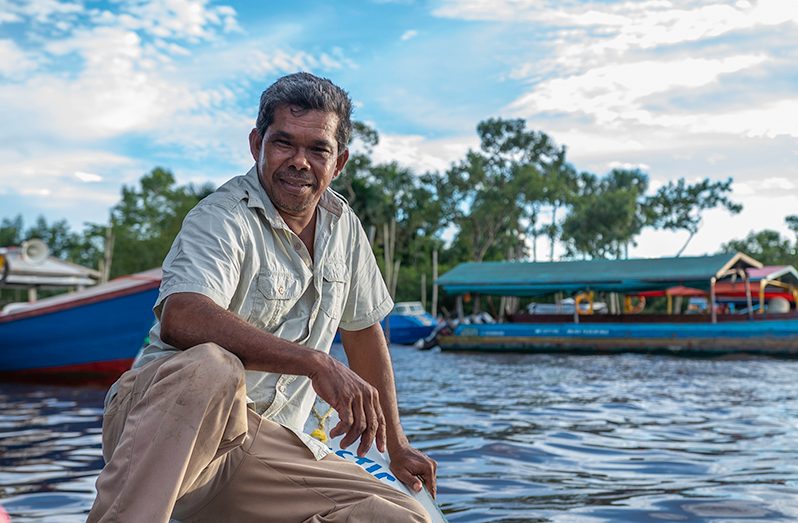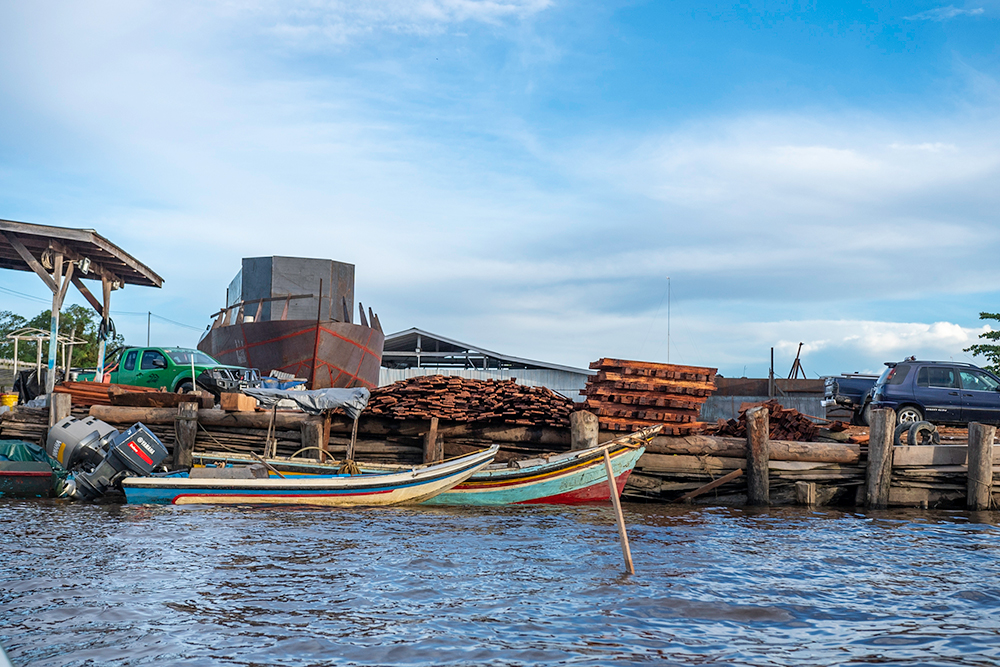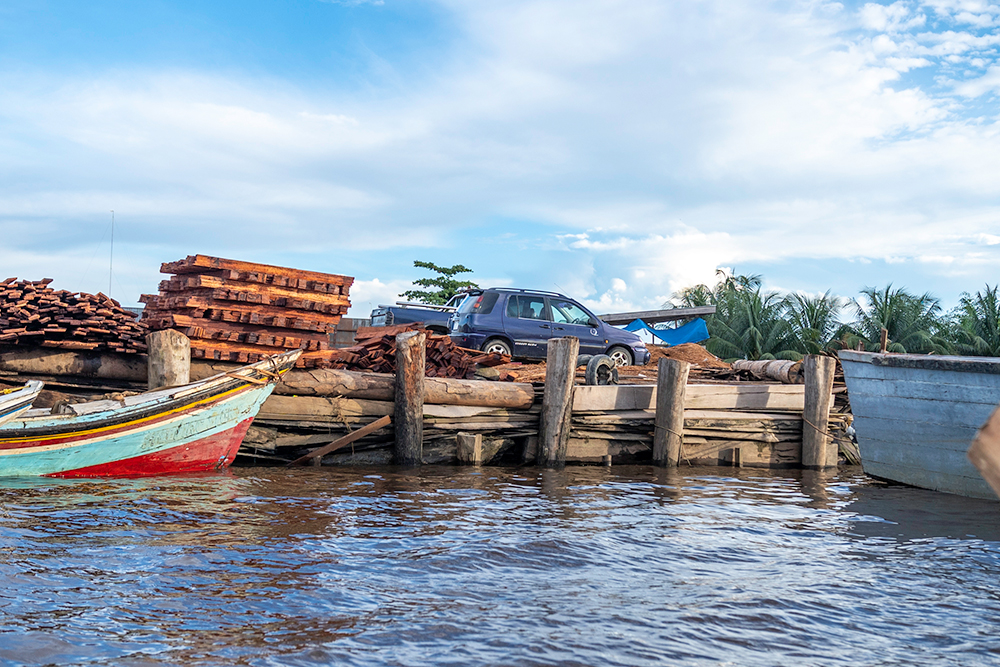ZAMAN Nazier is a resident of Bonasika, which is on the mainland and is accessed via the Essequibo River through a tributary.
The area consists of Lower and Upper Bonasika, a farming community of Indigenous people and East Indians.
There are about 144 residents in Lower Bonasika and the school is three miles down the river. Most of the men in that community are labourers on farms or are farmers themselves.
Upper Bonasika is more populated and has a health post and a school as well as a community centre ground and an active community policing group and outpost.
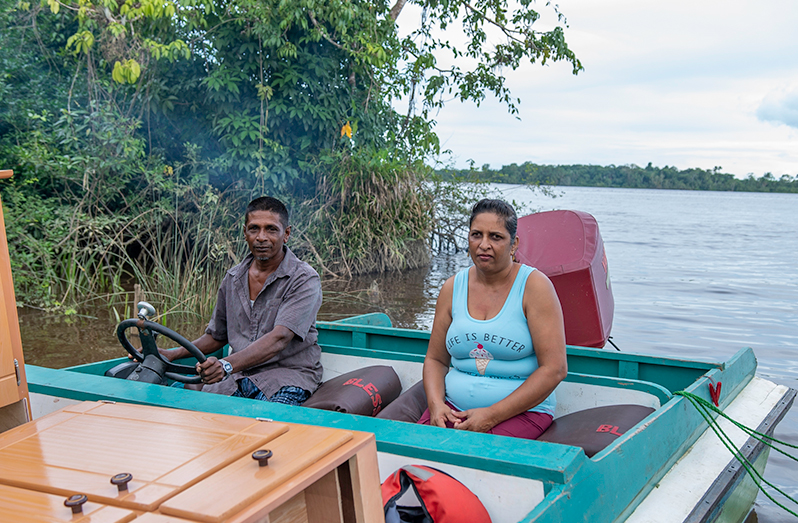
Nazier is a businessman and a farmer and he has his business place at Present Hope, East Bank Essequibo, a river gas station for boats.
His farm is at Bonasika, and he is a large-scale citrus farmer. He only cultivates limes.
The 53-year-old told the Pepperpot Magazine that he is originally from North West District (NWD) and he has been a resident of the riverine community for as long as he can remember.
Nazier explained that he is plagued by constant erosion and would do what he can to prevent his gas station from falling apart or getting washed away.
He explained that he packed greenheart and slabs of wood to tie off the land from the river but it is not enough to fully prevent erosion.
“I would like some assistance to keep the door of my business open and if the authorities can visit and render any form of help I will be more than glad,’ he said.
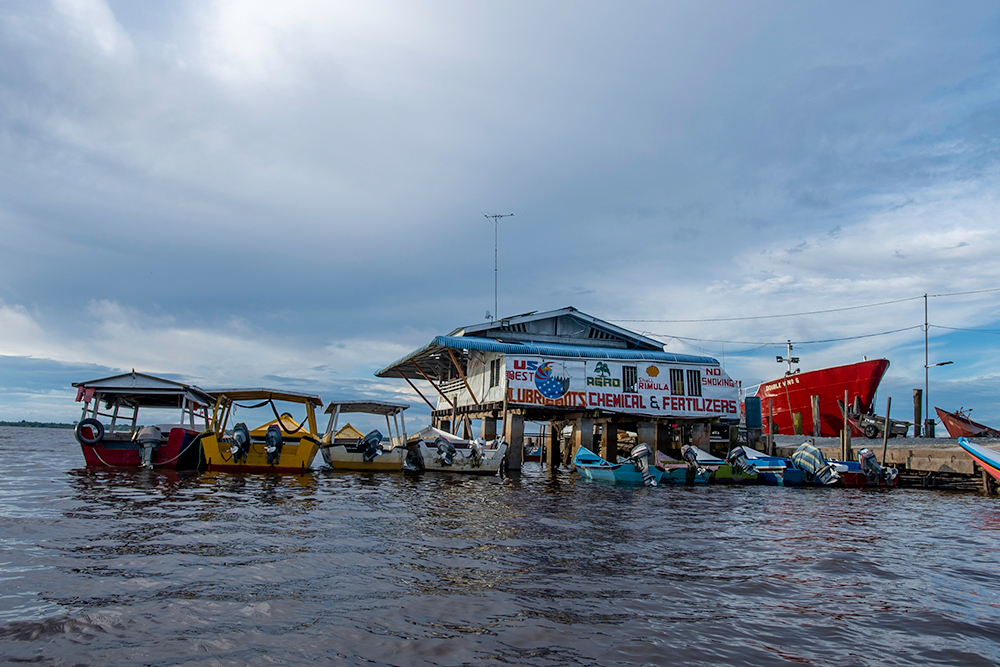
The father of four added that due to the schooling of his children, he had to relocate and being a resident of a riverine community is not ‘a walk in the park’ because it entails a lot of challenges in addition to the high cost of living and the fluctuating fuel prices.
Nazier would allow residents and just about anyone to use his landing as a form of ease of access and if he can assist locals in any way he usually would.
He is very pleased about excavation works being done at Bonasika for the first time through the government and it will enhance farmers’ production significantly and reduce flooding.
Nazier provides employment for 20 people on his farm and four at his gas station on the river.
Mahadeo Teehal, the farmer from Quarter Benabo
Meanwhile, Mahadeo Teehal, better known as Tony, is a resident of Quarter Benabo, Essequibo River and is a farmer.
The 50-year-old told the Pepperpot Magazine that the island has seen an upgrade in the sea defence in which a basket was constructed to prevent erosion and flooding.
The current state of the erosion at Zaman Nazier’s gas station at Present Hope
He is, however, grateful if at least one internal drain can be dug to relieve farmers on the island who have to cope with constant flooding.
Quarter Benabo Island is one of the hundreds of islands in the Essequibo River. It is 20 minutes via boat from Fort Island and is home to eight families, who are cash-crop farmers, cattle and livestock farmers, fishermen and other skilled folks.
The island is very large but is like a swamp with no drainage and irrigation for water to recede from the island, making it inaccessible for walking.
Quarter Benabo Island is the home of plantains, bananas, ground provisions, citrus and other fruits and cash crops.
The water coconuts on this island hold a lot of water. From one coconut you can get three and a half glasses of fresh water to indulge.
Any movement around this island is by boat and the people are very friendly and welcoming.
There is no potable water supply, electricity, internet, or cable services, but the internet can be accessed via cell phones.
The nearest health post is at Morashee across the river from Quarter Benabo Island and people would utilise the services there and also at the Fort Island Health Centre.
This island doesn’t have a village leader or a Community Development Council (CDC), but the residents said during the rainy season it is challenging for them because the place is very wet, inundated and muddy and the cows would get stuck for days.



.jpg)




